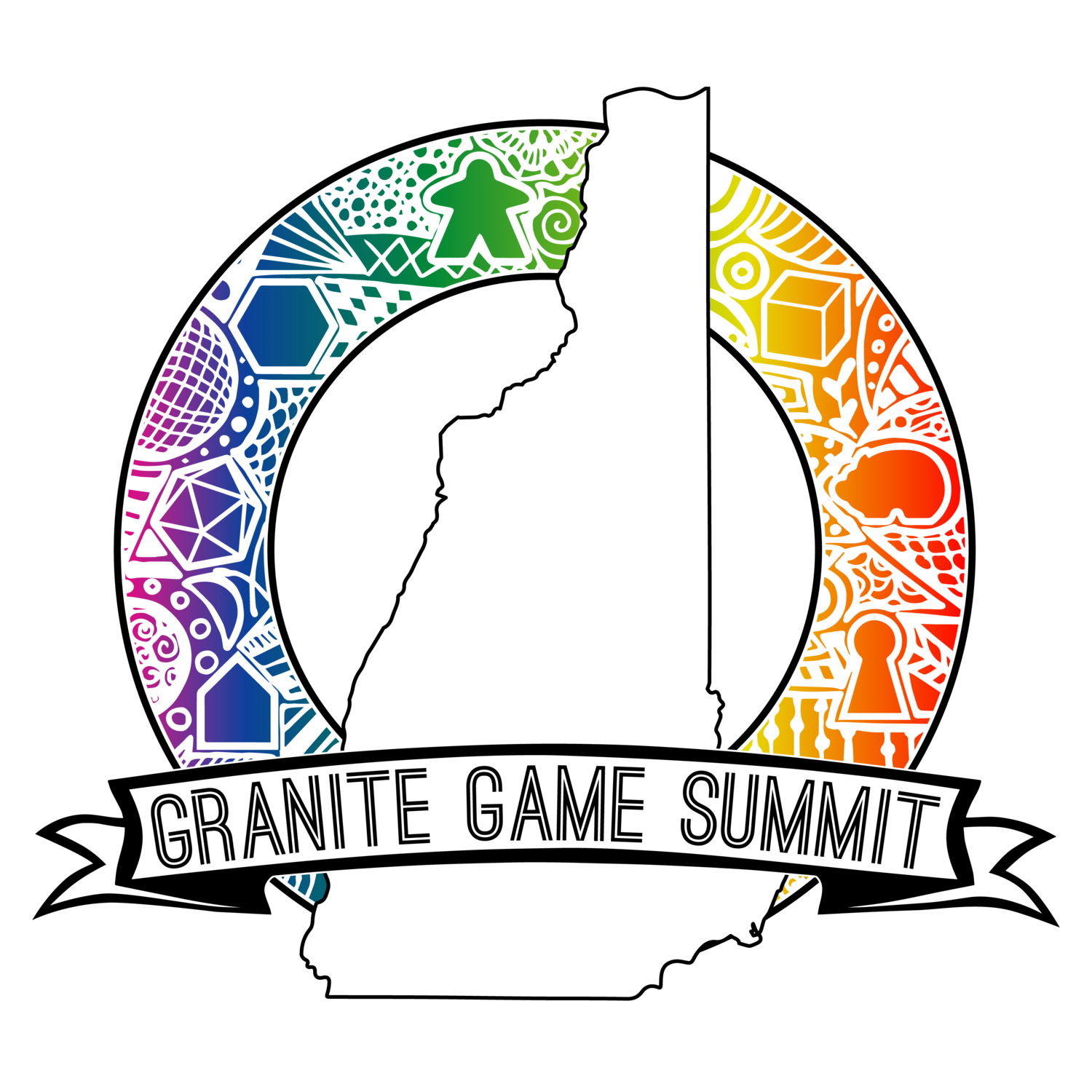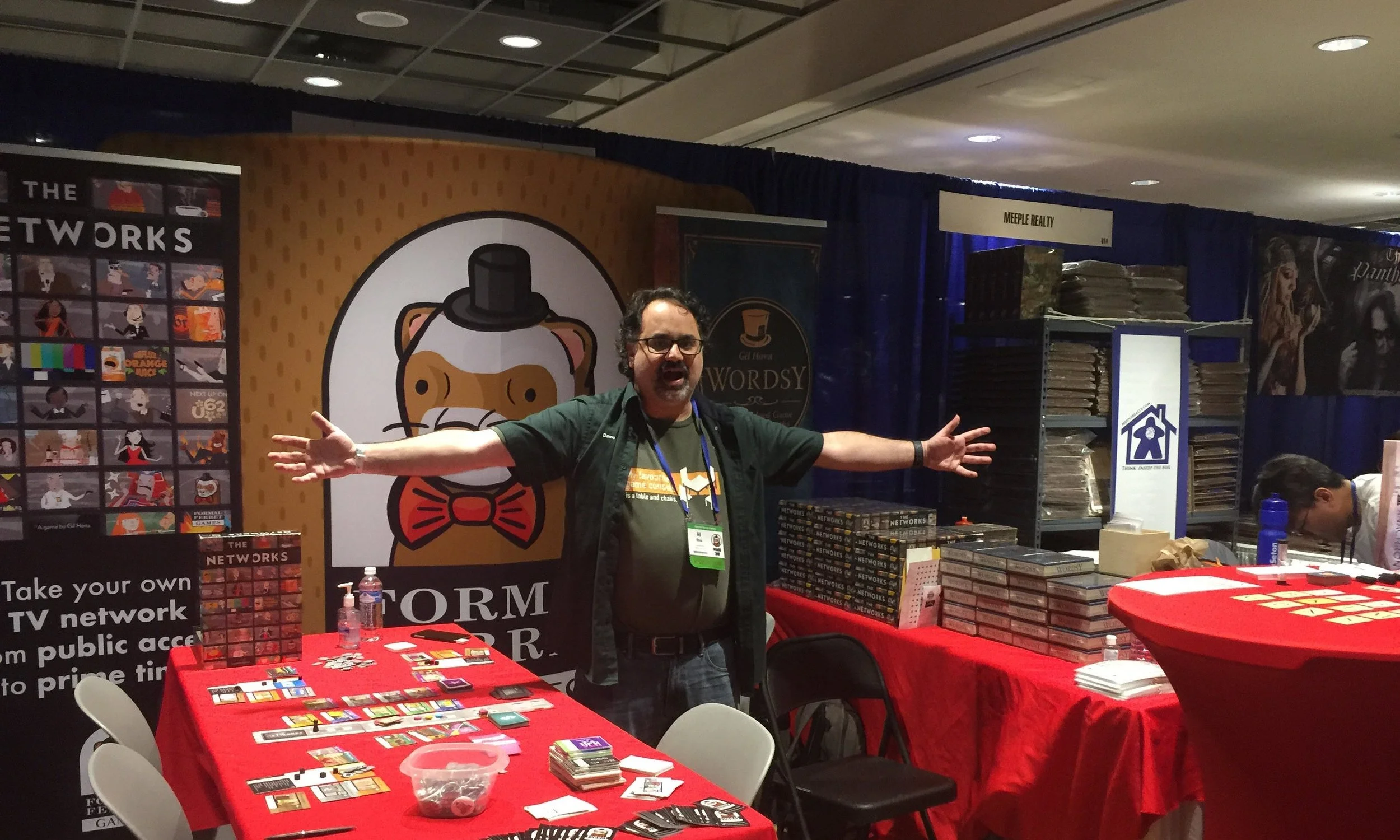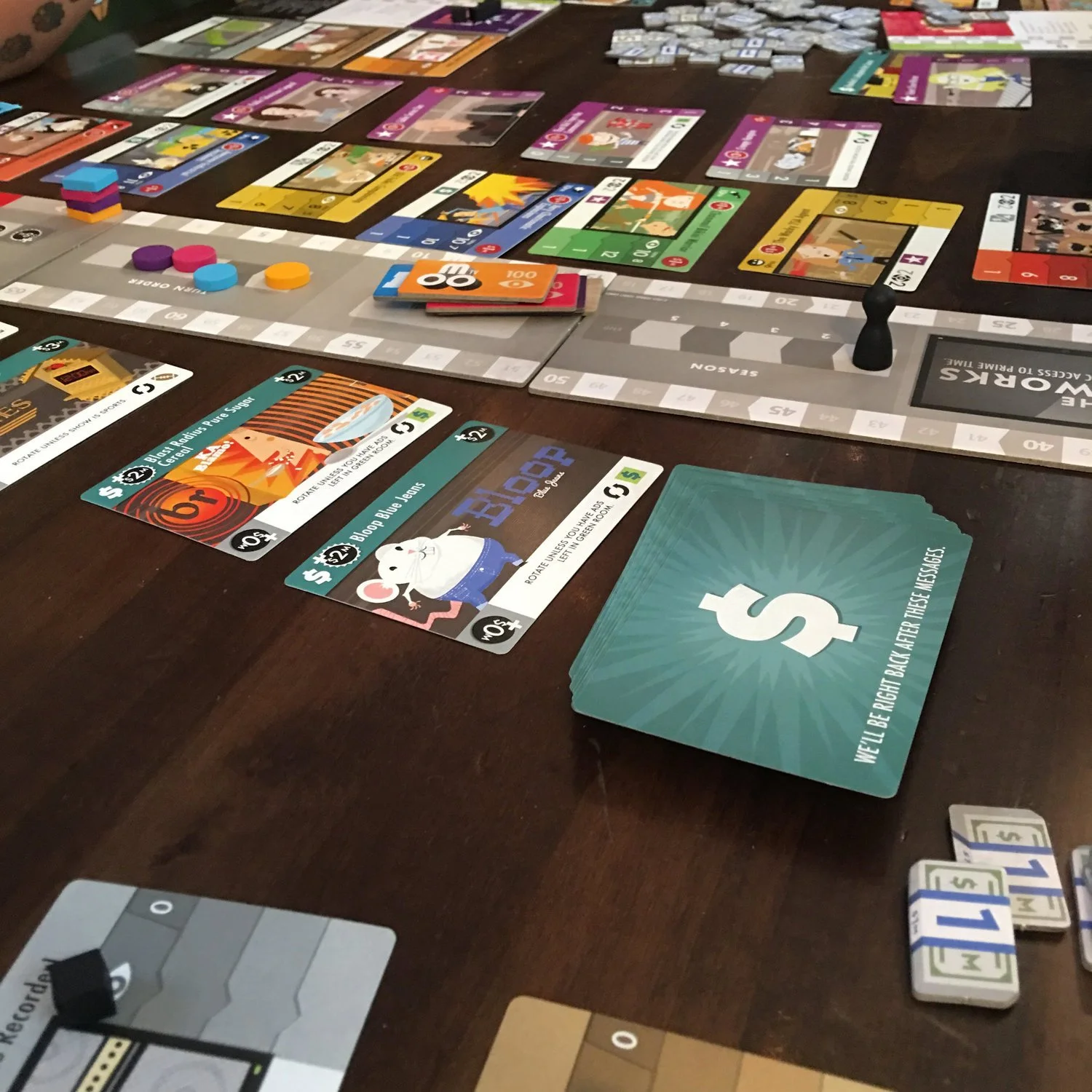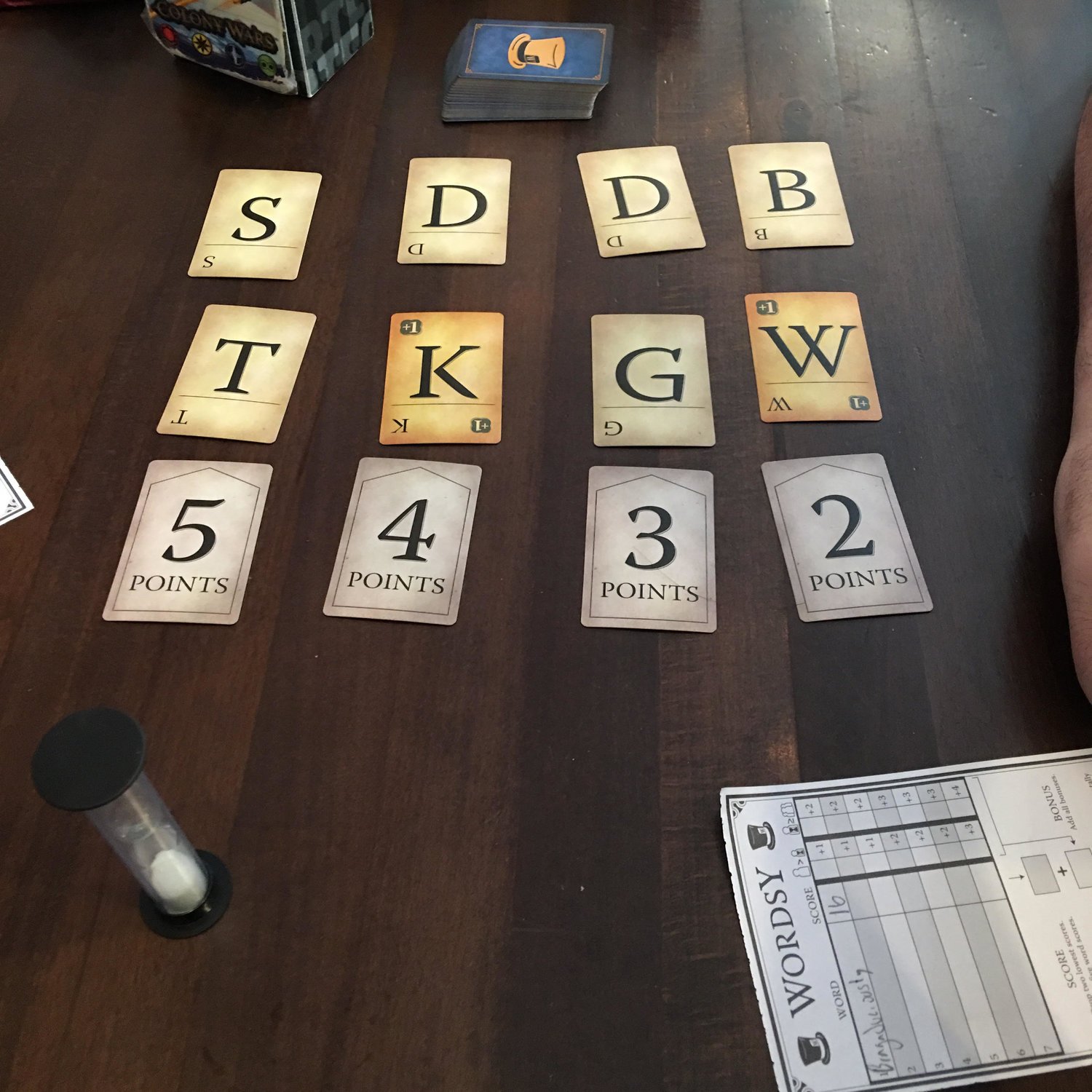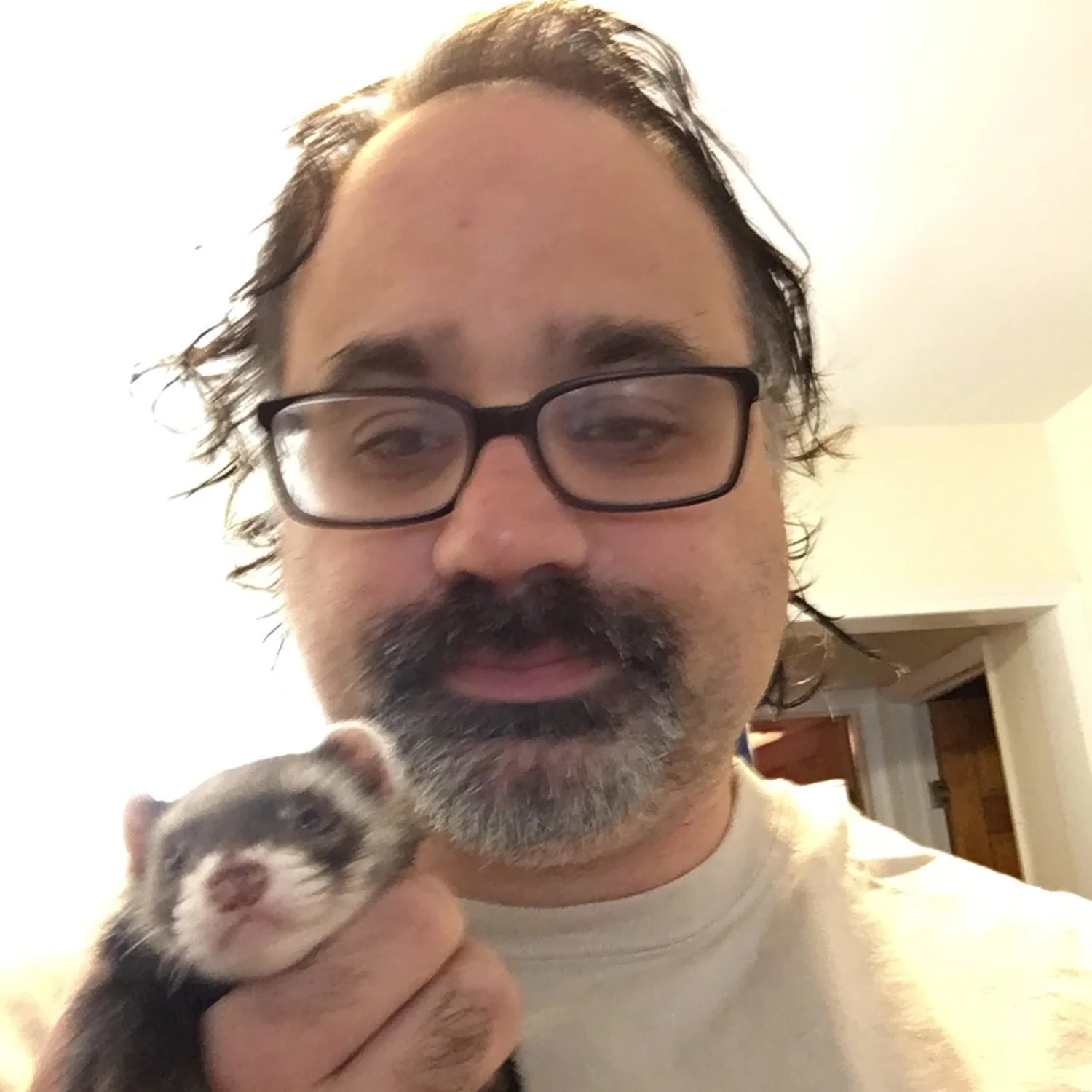Gil Hova
Today we are featuring Gil Hova, designer of The Networks and the founder of Formal Ferret Games. Gil was also the subject of the pilot episode of the DiceBreakers' series Gamer's Table. You can watch the episode here. Gil has been into modern board games since about 2000, and has been trying to design them for just about as long. In 2014, he left his day job to found Formal Ferret Games. So far, he’s self-published Bad Medicine, The Networks, and Wordsy. He lives in Jersey City, just across the water from Manhattan, with his girlfriend and two adorable ferrets. This will be Gil's very first Granite Game Summit!
THREE RANDOM FACTS ABOUT GIL:
After Gil left college, he became a sound editor in the film industry. His biggest claim to fame was working on the Pokemon movies, but he worked on quite a few projects that would rival The Room in pure badness.
Despite all this, Gil doesn’t actually enjoy watching movies anymore. He’s always been extremely squeamish about gore in photos and films (but not in comics or books, oddly enough), and gets freaked out during suspenseful scenes. He hasn’t watched many movies (or TV shows, which might be surprising!) since he got into gaming, and kind of likes it that way.
Gil loves music, but is totally a hipster. His older brother once walked into his room and asked about the construction down the street, but the noise turned out to be coming out of Gil’s speakers. If you ever need a room cleared out ASAP, you know who to call.
Questions by Kimberly Revia (KR), answers by Gil Hova (GH).
THREE BOARD GAME RELATED QUESTIONS:
KR: Was there any game that inspired your initial desire to start designing? If so, what game was it and what was it about that game that you found inspirational? If not, how did you initially get inspired to design?
GH: I played a lot of video games as a kid, and I’d always wanted to make them. But I think one thing that continued my fascination was a chapter in the novel Infinite Jest, in a scene set in a tennis academy for gifted kids. Some of the real propellerhead kids would play a game called Eschaton, which used old tennis balls, discarded equipment, a “borrowed” computer on a cart, and a whole lot of complex math to play a game that modeled World War 3 with a frightening level of detail. The description of the game - and how it broke down into a complete mess - was one of the things that, in retrospect, pushed me towards game design.
KR: Was there a turning point as a designer where you decided to start self publishing?
GH: I was lucky enough to be invited to the Gathering of Friends in 2014. When I arrived at the convention, I considered myself a hobbyist game designer with a day job in computer programming. When I left, I realized I’d been surrounded by people who had made a living in board games. And I couldn’t stop thinking about this question: how much better would I be at this if I did it all the time?
I had a game about competing TV networks that I pitched to a few publishers. I had a couple who were mildly interested, but I realized how many more designers there were than publishers. With Kickstarter around to help raise capital and fulfillment services like what Funagain provides to ship for me, the idea wasn’t as batty as it had been in the past.
So that convention is what pushed me. I leveled up there. And that game about competing TV networks that only attracted mild interest is now about to get its fourth printing...
KR: What part of the design process is the most rewarding for you?
GH: When the art first comes in, and I realize, “oh, that’s what the game is going to look like!” I’m lucky to have worked with so many talented artists.
THREE QUESTIONS JUST FOR FUN:
KR: What are your favorite aspects of escape rooms?
GH: Fun fact - I’ve done 38 escape room across 24 facilities in 15 cities around the world (which is a tenth of what some of my friends have individually done), and yet I’m not great at them! I’m pretty bad at deep-diving into puzzles. Instead, I enjoy interacting with the environment and figuring out how all the puzzles link and nest into each other. So on a team, I’m usually trying to track overall metapuzzles, make sure that players know what other players have seen and are doing, and building consensus on exactly when to ask for a hint (which is a surprisingly useful escape room skill).
KR: How many ferret friends do you own?
GH: For me, two is the perfect number. They keep each other entertained (although my girlfriend and I do our share in making sure they stay playful and happy), but it’s not an overwhelming amount of work to take care of them. I’ve had a total of 8 ferrets in my life, but my current two are an excellent pair. They were close with each other on their first day together!
KR: Do you have any convention specific rituals for staying sane and healthy?
GH: I try to remind myself that I can’t be everywhere and do everything. If I’m somewhere, that place is probably where I need to be at that moment. Until I started practicing that kind of mindfulness, I drove myself crazy at conventions by thinking of all the stuff I was missing.
If I’m not scheduled for anything at the time and I’m very hungry or very tired, then I eat or sleep as necessary. Time of day doesn’t really matter, and gaming opportunities don’t matter. I have to pace myself and listen to my body.
You can find Gil and what he is currently up to by following the links below!
Twitter: @gilhova
Instagram: @gilhova
Facebook: Formal Ferret Games
Blog: gil.hova.net
Mailing list signup here
